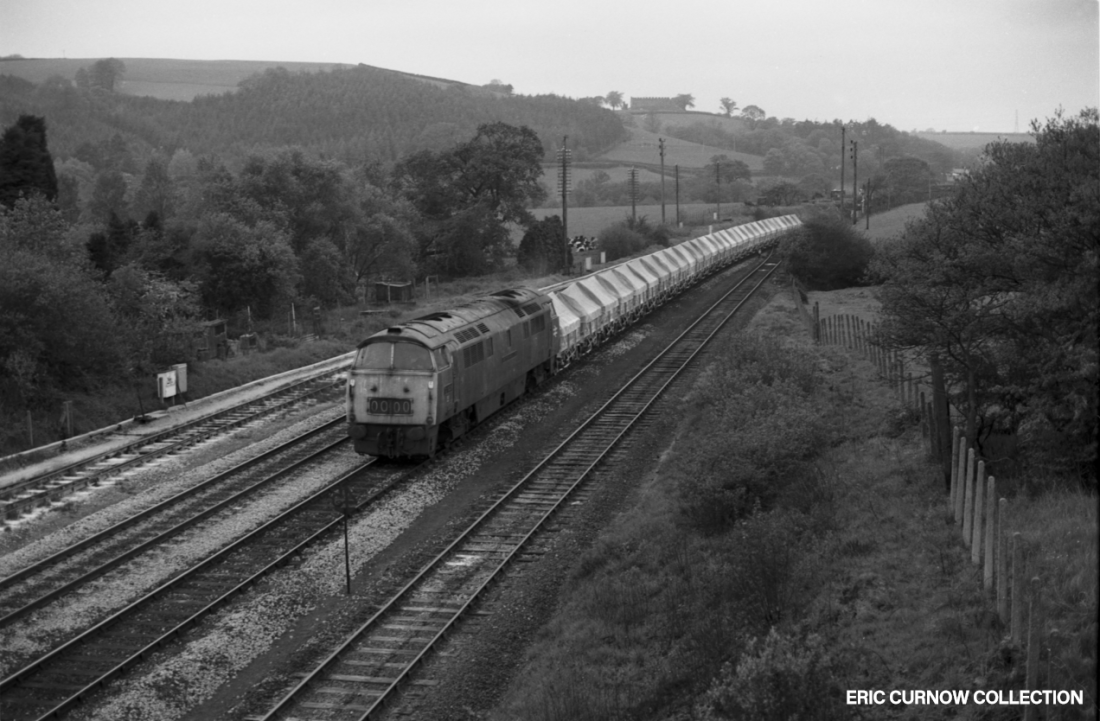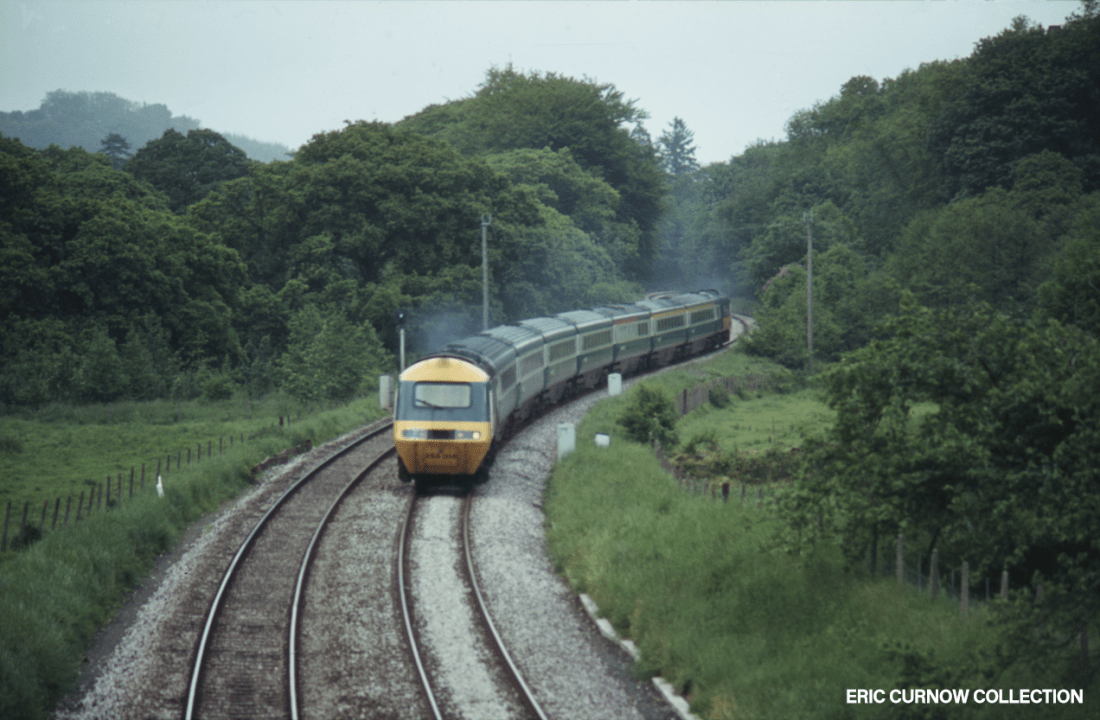Of the trains that I traveled on east through Cornwall, very few stopped at Lostwithiel Station, although it was always a place to stare out at as there might be a loco or two at work on china clay or milk tanks. The descent was a good indicator that the station was near, the signals of the branch appeared on the right, and the buildings of the old railway works and good shed presented themselves on the opposite side as the train crossed the river. Until rationalisation bit, the station had traditional wooden GWR structures with wide awnings, and cast iron running-in boards, and it was sad that these were demolished for replacements that were utilitarian and not particularly impressive. The palm trees on the platform gave it a distinct feel, too.
On the south side of the station as I passed through there were sidings for clay wagons, and beyond the crossing on the right the Creamery, and sidings for milk tanks. It was many years later before I alighted from a train and explored the town and immediate area for its railway heritage.
 A D63XX runs around its train of china clay wagons in the sidings on the seaward side of Lostwithiel Station while a shunter waits to reset the points. Some maintenance on the platform requires a ladder to assist and panels lie propped against the Signal Box. 65###AE01-LOS-D63XX-SHU_C
A D63XX runs around its train of china clay wagons in the sidings on the seaward side of Lostwithiel Station while a shunter waits to reset the points. Some maintenance on the platform requires a ladder to assist and panels lie propped against the Signal Box. 65###AE01-LOS-D63XX-SHU_C

In rather unkempt appearance, D1023 “WESTERN FUSILIER” leads a train of china clay hoods on the down main through the Fowey Valley just north of Lostwithiel, where storage sidings appear both sides of the lines. Near the centre of the scene, Fresian cows are camped together in the corner of a field, and Restormel Castle is on the skyline behind. 760516A01-LOS-D1023-C_CLY

Following on from the previous photograph, as this is apparently D1023 “WESTERN FUSILIER” again, it seems that the train has been set back into a siding pending movement elsewhere – possibly down to Fowey. Unlike the opposite siding that has china clay residue all over the track, it seems that this particular track doesn’t often hold loaded trains. 760517A02-LOS-D1023-C_CLY

253014 snakes through a wooded location reminiscent of the view from the railway overbridge close to Restormel Castle near Lostwithiel on an up service. The W.R. HST sets were seven car rather than nine as on the E.R., I imagine because the intended loadings were lighter (for most of the year) and to facilitate unassisted climbing of the Devon banks. 8####BT01-UNK-~3014-PASGR

A Penzance-bound D1021 “WESTERN CAVALIER” rounds a curve next to an area of coniferous forest, where the telegraph wires are lower than usual. Cornwall lost a lot of tree covering in the mining era as they were used as fuel or pit props. © Dave Lazenby Collection. 740620A01-LOS-D1021-PASGR

47076 “CITY OF TRURO” is pictured at Lostwithiel with the SO 10.56 Paddington-Penzance on 19/07/1975. Like the loco’s cab front roof paintwork, the station is in poor state – of thoroughly GWR form, and remarkably still with pre-nationalisation signs. In the sidings to the right is a rake of china clay “hood” wagons. 750719A01-LOS-47076-PAS_D
 One of the earliest Class 37s to be allocated to Cornwall for china clay traffic waits on the down platform at Lostwithiel Station in the late 70s. In the background flowing right to left behind the trees is the river that runs to and widens out into Fowey Bay. 8####AA01-LOS-37142-LIGHT
One of the earliest Class 37s to be allocated to Cornwall for china clay traffic waits on the down platform at Lostwithiel Station in the late 70s. In the background flowing right to left behind the trees is the river that runs to and widens out into Fowey Bay. 8####AA01-LOS-37142-LIGHT
37206 slowly hauls an unfitted rake of “clay hoods” off the Fowey line, nearing Lostwithiel on 24th August 1982. The tarpaulins bear the English China Clay logo, and it was not all that many years previously that someone had the bright idea to raise them to a ridge shape to minimise the water ingress into the clay, Some ideas take time to arrive! 820824A01-LOS-37206-CCLAY
